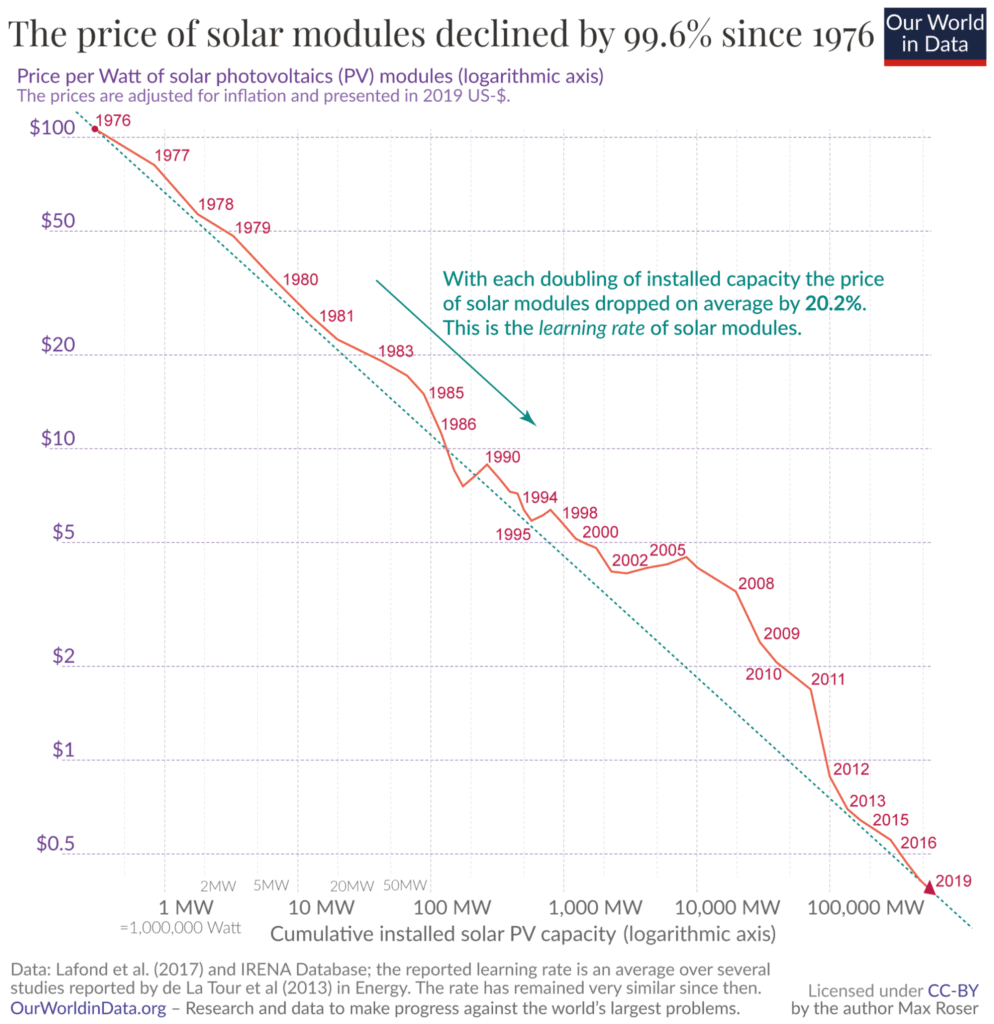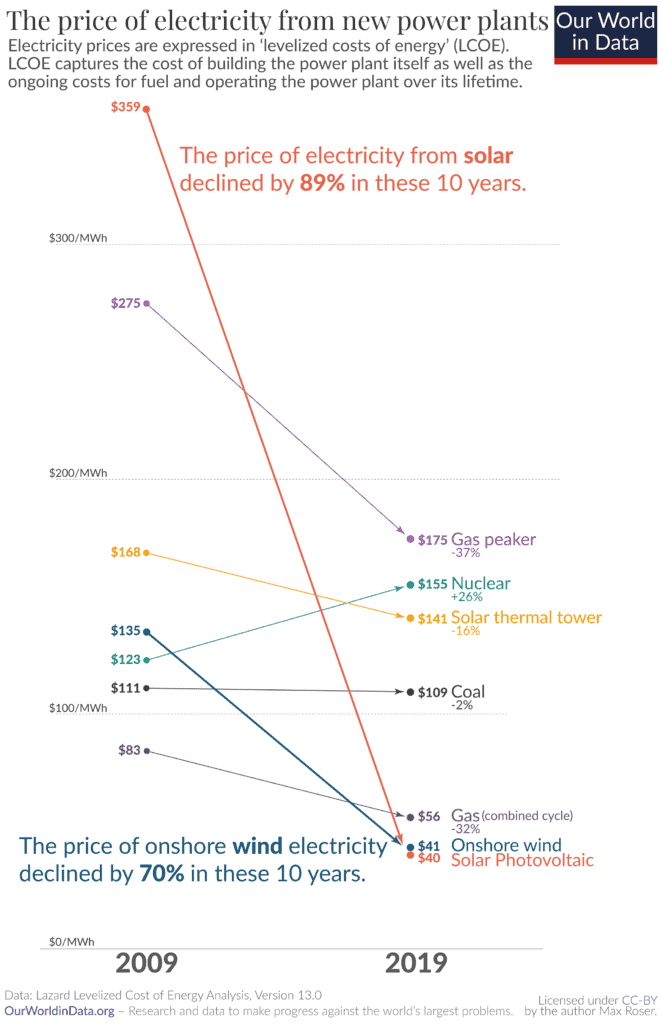Thanks to incrementally better technology, panel design, and manufacturing of scale, solar panels have become incredibly cheap. In the past decade alone, their price per unit of generated energy has fallen by 85%, so much so that multiple reports consider solar to be the cheapest energy ever.
According to the International Renewable Energy Agency (IRENA), two-thirds of all wind, solar, and other renewable energy projects that came online in 2020 were cheaper than the cheapest new fossil fuel power planets. That’s double the equivalent share for 2019.
This trend is only to continue in the future, with the cost of renewables expected to drop significantly.

“The global weighted average cost of newly commissioned solar photovoltaics (PV), onshore and offshore wind power projects in 2021 fell. This was despite rising commodity and renewable equipment prices in 2021 given there is a notable lag before these cost increases appear in project total installed costs; and significant improvements in performance in 2021 raised capacity factors, especially for onshore wind,” wrote the authors IRENA’s Renewable Power Generation Costs in 2021 report.
Compared to 2019, the cost of onshore wind fell by 13%, offshore wind dropped by 9%, and solar photovoltaics projects saw a 7% reduction in cost. New utility-scale solar PV projects commissioned in 2021 fell by another 13% year-on-year, from USD 0.055/kWh to USD 0.048/kWh.
IRENA calculates that, given current high energy prices, the renewable power added in 2021 will save at least $55 billion from global energy generation costs in 2022.

These findings are echoed by another report released by the International Energy Agency (IEA), known as World Energy Outlook 2020, which concluded that “solar power is now the cheapest electricity in history”.
According to the IEA, PV technology is cheaper than coal and gas in most countries. In fact, the sinking cost of solar has caught even the authors of the report by surprise, which has led them to revise some of their earliest forecasts.
The IEA presented four pathways or scenarios for what the world’s energy generation might look like in 2040, all of which forecast a massive rise in renewables. The current most likely scenario, which isn’t overly optimistic, has 43% more solar output by 2040 than the IEA had forecasted earlier in 2018.
These developments are naturally good news, but they’re still not on track to stave off humanity’s greatest existential threat: climate change.
Despite the declines in coal and other fossil fuels, the IEA and other research institutions are cautious about declaring we’ve reached peak global oil use. Furthermore, demand for gas is expected to rise by 30% by 2040, although the war in Ukraine has surely changed this dynamic, at least in Europe.
We’re just not out of the woods yet, as far as our reliance on fossil fuels is concerned and a lot more ambitious action is required of us. Keeping global warming below 1.5°C by reaching global net-zero CO2 emissions by 2050 would involve, among other things, individual behavioral change, such as working from home at least three days a week and less meat consumption.
“Renewables are by far the cheapest form of power today,” said IRENA director-general Francesco La Camera. “Renewable power frees economies from volatile fossil fuel prices and imports, curbs energy costs and enhances market resilience – even more so if today’s energy crunch continues,” he added.
As world leaders gear up for COP27 in Egypt in November, governments would be well advised to take advantage of increasingly affordable renewable energy and the vulnerabilities exposed by the energy crisis to accelerate their commitments and turn their climate pledges into concrete action.


